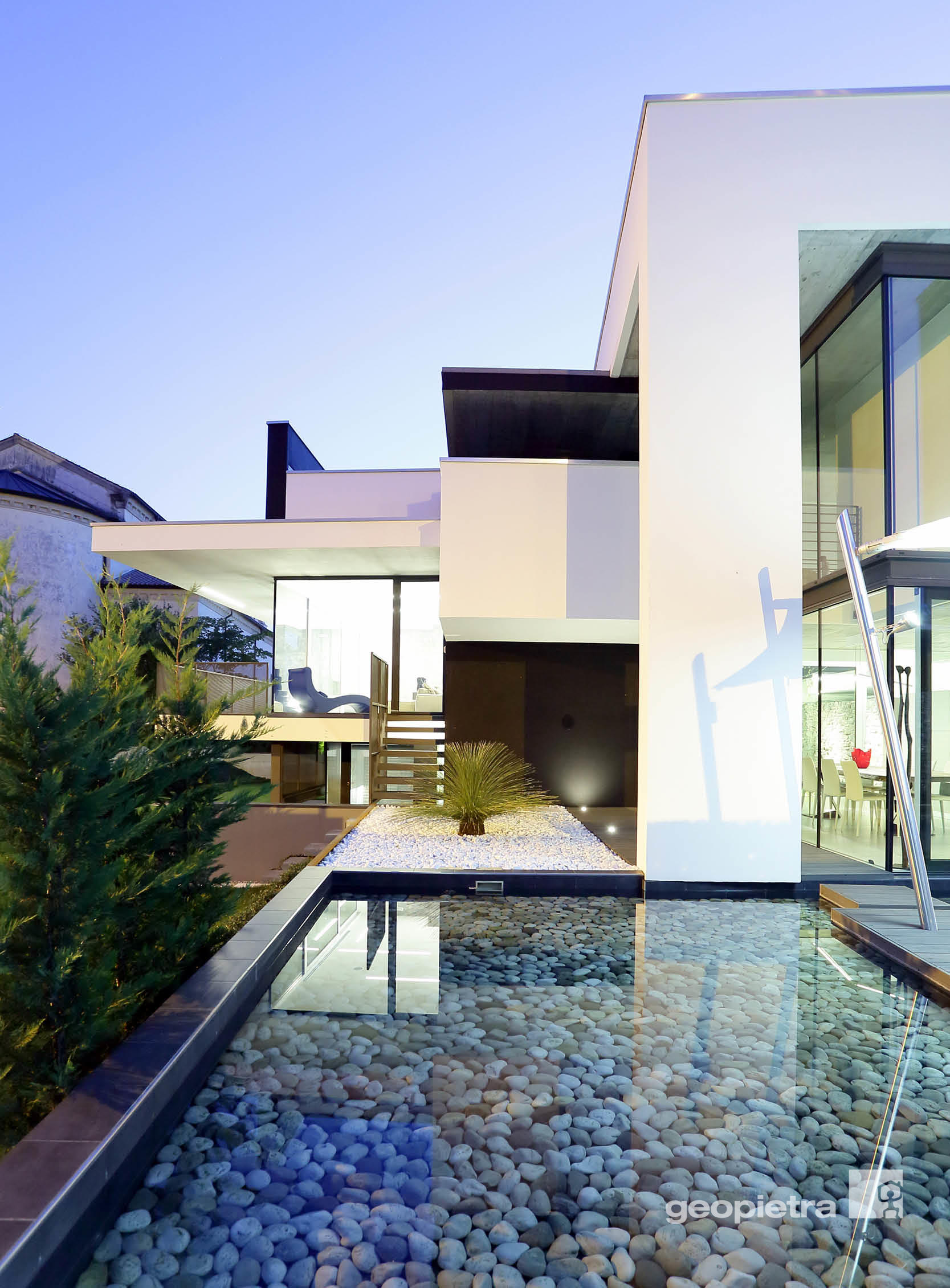The natural light and airiness of indoor areas blend harmoniously with the outdoors, and were the key design elements for the architect Guarneri, whose residences are known as the “villas of light and reflection".
Why is light so important to you in your role as architect?
Let me answer with something Gae Aulenti said. "We architects work with three things - space, light - especially daylight but also nocturnal light - and then architecture. And of course we can have light creating patterns, a tool for architectural emphasis, and light as a practical element incorporated into museums where it forms part of the design, not just as a preference but also as a necessity.” I personally feel that architecture is the main tool for manipulating sunlight, then at night artificial light colludes to take the stage. Architectural composition, especially in residential settings, should only develop through the detailed, targeted study of light.
And what about the presence of water? It is often featured in your projects. Why?
Because it is a natural and alive element, which is never the same, like fire in the fireplace or an inner garden, and I always propose it. The customers of my homes are fascinated by the presence of water; they understand the great aesthetic significance given by the swarming of its solar reflections or the night-time underwater lighting; they relax at the sound of the discrete water lapping and even in winter when the stretch of water turns into a gleaming sheet of ice.
What other elements come into play in your villas?
In an architectural setting characterised by sharp edges, geometries and rigour, I like to create contrast by juxtaposing the natural elements of water, fire and greenery but also the firm texture of stone clapping. In this villa, for instance, I needed a strong, solid dark lithic yet perfect stone that could arouse emotions even in close-up view because the wall “cuts the house into half”, going beyond it from the outside to the inside to end up in the water mirror. Once again for this villa I found the solution with Geopietra, which is indisputable for the quality and naturalness of its products.
Today, thanks to Geopietra, architects can finally cover endless application possibilities given the wide range of solutions available in this collection, but most of all it lets us be a little more 'daring' by applying types of stone that would not have been possible earlier due to either difficulty in finding them or their high costs. The new Geopietra construction system makes it possible to create unique customised styles, safeguard the natural surroundings, and achieve environmental sustainability and energy savings, but most of all it recaptures the charm of using stone in architecture, a skill that was gradually disappearing due to a lack of stonemasons.
Talking about private dwellings, what is your concept of living?
In designing a villa, I consider the study of the floor plan of primary importance, i.e. the design of the sequence, size and location of the living area, which is precisely the place that should reflect the client’s personality and way of living. Houses where the settings must not be constrained by walls, but rather there must be interior vital places that continue to the exterior, mediated by large glass walls, like fragile diaphragms between the inside and the outside, the transparency of which enhances the sense of freedom and symbiosis with the outdoor natural environment.
In this article: murogeopietra P06 CASCATA.





